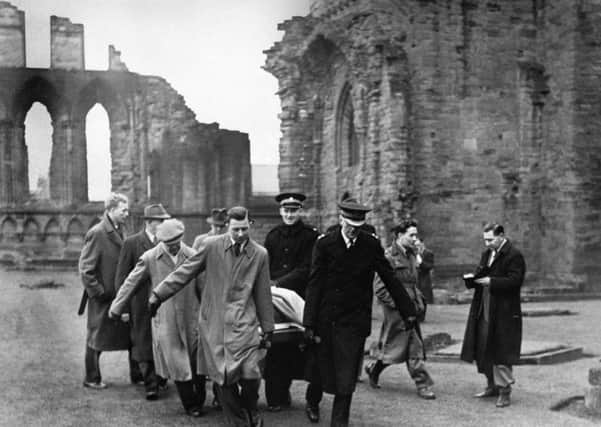Why Stone of Destiny should finally return home – Murdo Fraser


The Stone was recovered some months later, and then returned to Westminster Abbey. There it remained until 1996, when the then Scottish Secretary, Michael Forsyth, arranged for its transfer to Edinburgh Castle.
This exercise in “nationalist unionism” on the part of the Secretary of State had significant symbolism, as for centuries the presence of Scotland’s historic coronation stone in London had been a source of grievance for the Scottish nation, and not just for those of a Nationalist persuasion.
Advertisement
Hide AdAdvertisement
Hide AdBut even at the time of the Stone’s return to Scotland, there was much debate as to where it should be located, with a strong case being made for its return to Perthshire.
The future of the Stone is again in the news, with the Scottish Government having launched a consultation on whether or not it should be moved from Edinburgh to Perth, where the Conservative-led council has ambitious plans for it to become the centrepiece of a proposed new museum and visitor attraction in the former Perth City Halls.
This development is supported by £10 million from the UK Government by way of the Tay Cities Deal.
The alternative is to retain the Stone at Edinburgh Castle, in a redevelopment of the existing, rather disappointing, display, which has the Stone sitting ignominiously, and almost unnoticed, in a glass case alongside the Scottish Crown jewels. The Stone of Scone, as it is often known, is certainly of significant historical importance. According to legend, it was Jacob’s pillow from Biblical times, which came to Scotland by way of Ireland and became the seat on which Kings of Scots were crowned.
Whether the Stone that we know today, a block of Perthshire sandstone, is really this historic relic is a matter of debate; it is widely believed that the monks of Scone concealed the real Stone when Edward’s men came knocking and palmed them off with a fake.
But even if it is not, the Stone that sits in Edinburgh is nevertheless an artefact of significant historical interest, of which the Kings of England, and then monarchs of Great Britain, have been crowned ever since the 14th century. And, in the absence of the ‘real’ Stone, it is all we have. I have for many years been a supporter of the campaign to have the Stone brought back to Perthshire, and now is the perfect opportunity to make that happen. As the centrepiece of a new development in the centre of Perth, the Stone will be presented in its appropriate historical context.
The whole project has potentially enormous economic significance for the local area, and will bring both locals and visitors into the city centre of Perth in large numbers.
Advertisement
Hide AdAdvertisement
Hide AdIt is hard to see what economic benefit exists from retaining the Stone at Edinburgh Castle, already Scotland’s busiest tourist attraction.
I cannot believe the argument that visitor numbers to the Castle would in any way diminish were the Stone to be removed. Moreover, there is no historical connection between the Stone and Edinburgh, in that prior to 1996 it had never rested in the Scottish capital.
I am encouraged that the Scottish Government is now running a consultation on the question of the location of the Stone, and I have absolutely no doubt that now is the time to return it home to Perthshire.
I would encourage those who share my view to complete the consultation, which is open until 19 September. Whether we care about the economic prosperity of Perth and Perthshire, or are interested in ensuring that our cultural heritage is properly recognised, this is the right step to take.